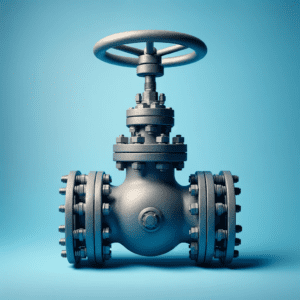 In the contemporary industrial environment, chemical valve nickel plating is a key pillar, essential for ensuring the reliability and durability of critical components in a wide range of applications. This highly specialized process involves coating valves of various sizes and types with a layer of nickel, chemically deposited to improve their surface properties.
In the contemporary industrial environment, chemical valve nickel plating is a key pillar, essential for ensuring the reliability and durability of critical components in a wide range of applications. This highly specialized process involves coating valves of various sizes and types with a layer of nickel, chemically deposited to improve their surface properties.
Table of Contents
ToggleDemand: Market Demand and the Importance of Chemical Nickel Plating Valves
In the valve industry of all sizes, the demand for components with high performance and long service life is constantly increasing. Valves, essential for controlling flows in a wide variety of systems, must withstand extreme operating conditions, from high pressure to exposure to chemically aggressive substances. In this context, there is an emerging need for surface treatments that can provide excellent corrosion and wear resistance. Chemical nickel plating presents itself as an optimal solution, providing a uniform and adherent coating that can protect valves and prolong their operating life.
Efficiency: Advantages and Benefits of Chemical Nickel Plating
Chemical nickel plating is distinguished by its ability to deposit a layer of nickel on metal surfaces through a chemical reaction, without the use of electricity. This process ensures uniform coverage, even within cavities, corners and recesses, where other coating methods might fail. In addition, the resulting nickel coating has excellent properties:
- Corrosion resistance: Protects valves from chemicals and oxidation.
- Hardness: Improves wear and abrasion resistance.
- Uniformity: Ensures consistent coating thickness, which is essential for maintaining dimensional tolerances.
Cost-Effectiveness: Cost-Efficiency of the Process
Despite the high quality of the results obtained, the chemical nickel plating process is also cost-effective. The extended life of treated valves reduces the need for frequent maintenance and premature replacement of parts. In addition, the ability to work at lower temperatures than other surface treatments reduces energy consumption, helping to minimize environmental impact and operating costs.
Eco-sustainability and Respect for the Environment
Chemical nickel plating, if handled properly, can be a relatively environmentally friendly process. Modern technologies enable the recycling of nickel plating baths and the reduction of harmful emissions. It is essential for companies that adopt this treatment to operate in compliance with current environmental regulations, managing waste responsibly and minimizing the impact on the land. This is why we are environmentally sustainable
Evolution: Innovation and Future Developments in Chemical Nickel Plating
The field of chemical nickel plating is constantly evolving, with research aimed at further improving the performance of coatings and reducing the environmental impact of the process. Recent innovations include the development of nickel plating baths free of harmful heavy metals and the introduction of more efficient recovery and recycling technologies. The focus on sustainability is driving the development of new formulations and processes, promising even better performing and environmentally friendly coatings.
Chemical nickel plating is a reliable and sustainable solution for the valve industry, meeting the needs for durability, efficiency and environmental friendliness. With the adoption of responsible practices and a commitment to continuous innovation, the chemical nickel plating process is set to play a key role in improving performance and sustainability in the valve industry.

